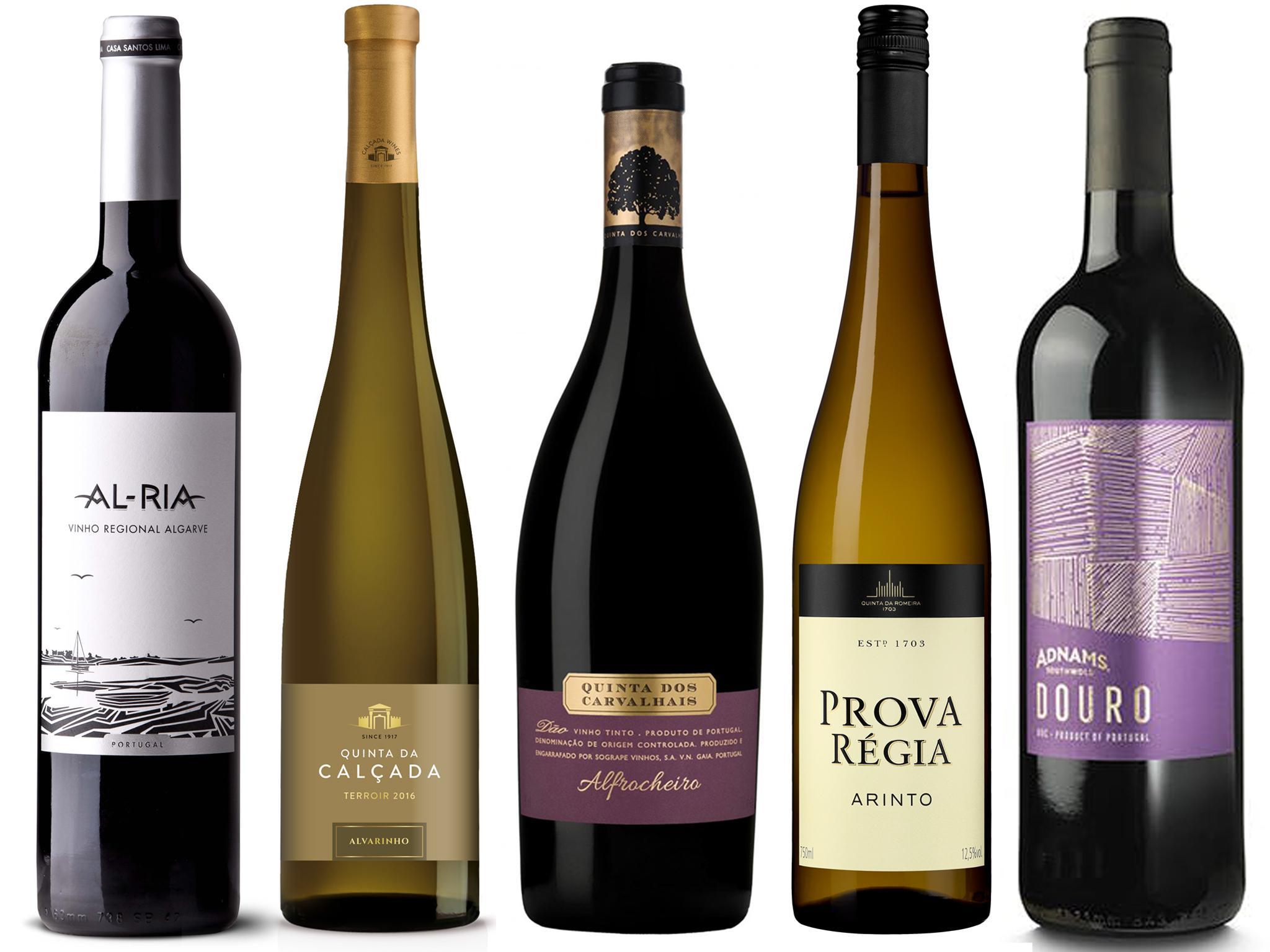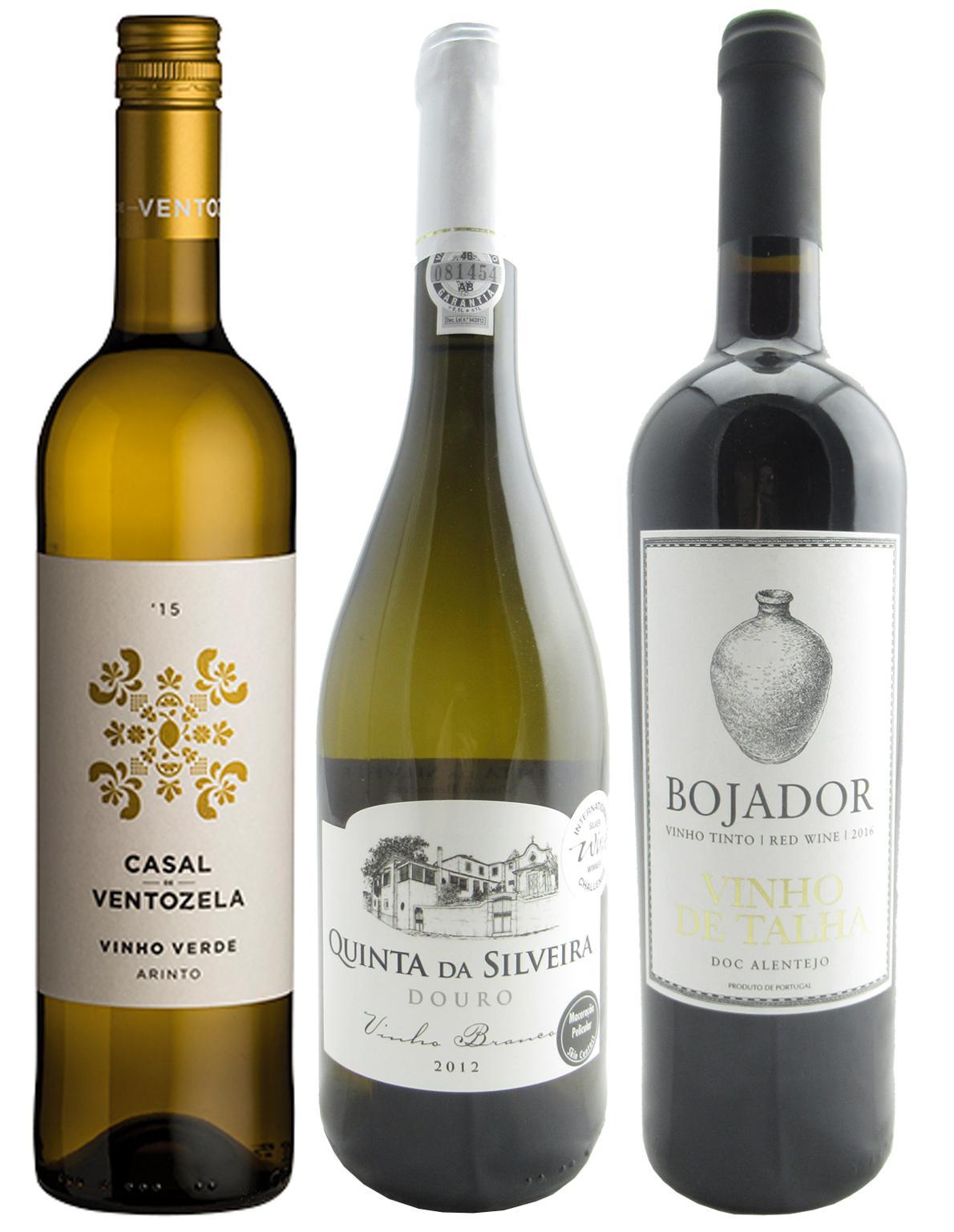The Independent's journalism is supported by our readers. When you purchase through links on our site, we may earn commission.
Wines of the week: 8 Portuguese wines
Popular as far back as Elizabethan times, wine from this region since majorly declined, but is now being revived, says Terry Kirby. Here’s his selection of what’s on offer now

Your support helps us to tell the story
From reproductive rights to climate change to Big Tech, The Independent is on the ground when the story is developing. Whether it's investigating the financials of Elon Musk's pro-Trump PAC or producing our latest documentary, 'The A Word', which shines a light on the American women fighting for reproductive rights, we know how important it is to parse out the facts from the messaging.
At such a critical moment in US history, we need reporters on the ground. Your donation allows us to keep sending journalists to speak to both sides of the story.
The Independent is trusted by Americans across the entire political spectrum. And unlike many other quality news outlets, we choose not to lock Americans out of our reporting and analysis with paywalls. We believe quality journalism should be available to everyone, paid for by those who can afford it.
Your support makes all the difference.Portuguese table wines have often been rather overshadowed – internally by the sheer dominance of port in its wine industry and externally by the neighbouring behemoth that is Spain, with its vast production, iconic wine regions and its own fortified wine in sherry.
And, although I’m sure there will be some out there, I can’t actually remember when I last saw Portuguese wines on the list of a restaurant that was not also serving Portuguese food. But there are new regions emerging and exciting wines made from indigenous grapes to be discovered as well as some old favourites to be revisited.
One still table wine most often associated with Portugal in the past was vinho verde, made from a variety of white grapes in the former Minho area of the northwest, where a moist climate and ocean breezes lifted the freshness and natural acidity of the grapes.
It was literally “green wine” and usually drunk young, and mostly with a very slight sparkle or what the French call petillance to the wine, making for an undemanding summer aperitif or casual quaffer.
But now new wines are being made that show the region is capable of much more. The Casal de Ventozela, 2018 (£9.99 or £7.99 if bought as part of mixed six bottle purchase, majestic.co.uk) made solely from the arinto grape is matured on the lees to give greater depth of flavour, with crisp apple and honeydew melon notes and a slight hint of white pepper.
And the Quinta da Calcada Alvarinho Minho, 2018 (£9.50, thewinesociety.com) is even fuller flavoured and made from alvarinho, the local name for albarino: citrus, melon and a very slight hint of salinity make for an enticing food friendly wine.
Further south, the white wines of the Bucelas region near Lisbon were once very popular in Elizabethan times in England as a fortified wine and allegedly mentioned by Shakespeare as “Charmenco” wine; later they were imported in quantity by the Duke of Wellington after he discovered them while fighting in the region, becoming known as “Portuguese Hock” because of their similarity to fashionable German reisling.
Wine making in the region declined, but has now been revived with terrific wines such as the new to these shores Quinta da Romeira Prova Régia 2018, (£10 minimum order six bottles, thefinewinecompany.co.uk; RRP£11.99 various independents) made from the Arinto grape, which is dry, full of lovely aromatic, stone fruit flavours and a long, mouth-filling finish. All these three wines are ideal as an aperitif, with shell fish and simple fish dishes such as grilled sardines.

Back north to the Douro and a considerably more complex wine: the Quinta da Silveira Branco, DOC, 2012 (£18.95, davywine.co.uk) is made from an intriguing blend of códega do larinho, malvasia and rabigato. Full-bodied wine, with forward ripe fruit and herbal flavours, the result of traditional treading of grapes and fermentation in open tanks, known as lagares – both techniques used in port production.
This is one for more substantial baked fish dishes and lighter meats or, ideally, the traditional Portuguese dish of pork and clams. When it comes to reds, the reduction in volume of bulk port production in the Douro – although sales of premium ports are actually increasing – has freed up space and grapes for more still wine production.
The long established port house of Quinto do Crasto now also produces – using traditional, lagares foot-trodden port grapes like tinto roriz and touriga nacional – simply terrific wines such as the Adnams Douro Red (£9.99, adnams.co.uk) which is medium-bodied, juicy and fresh, with smooth blackberry fruits. An almost ideal, versatile, good value, everyday red wine – stock up now for Christmas.
But, as with whites, there is much to be discovered elsewhere in red wines in Portugal. Another juicy guzzler comes from the Algarve in the south is the Al-Ria Tinto 2017 (£7.95, winesociety.com) where the same two grapes are beefed up with some syrah to create a rustic, more full-bodied blend, perfect for dishes such as meatballs with pasta or spiced lamb.
The Dao region has long been the source of straightforward robust reds but the Quinta Dos Carvalhais Alfrocheiro 2015 (£16.22, portugalvineyards.com) made from the local alfrocheiro grape is more nuanced and complex, with red and black berry fruits, touches of balsamic and herbal, minty notes. A lovely wine for autumnal mushroom and game dishes, such as pheasant and partridge.
And lastly, a real show-stopper from the Alentejo region: the Bojador Vinho De Talha Tinto Escpaco DOC 2016 ( £24.95, davywine.co.uk) is made “naturally” from trincadeira, moreto and tinta grossa grapes fermented in clay pots called talha and bottled unfiltered. Fresh, juicy but intense flavours of red fruits and hints of earthiness. Pair with a herbed, organic roast chicken or lighter meat dishes.
So that’s just some of what Portugal has to offer right now – and not a Mateus Rose, for those that remember it, in sight…
Join our commenting forum
Join thought-provoking conversations, follow other Independent readers and see their replies
Comments